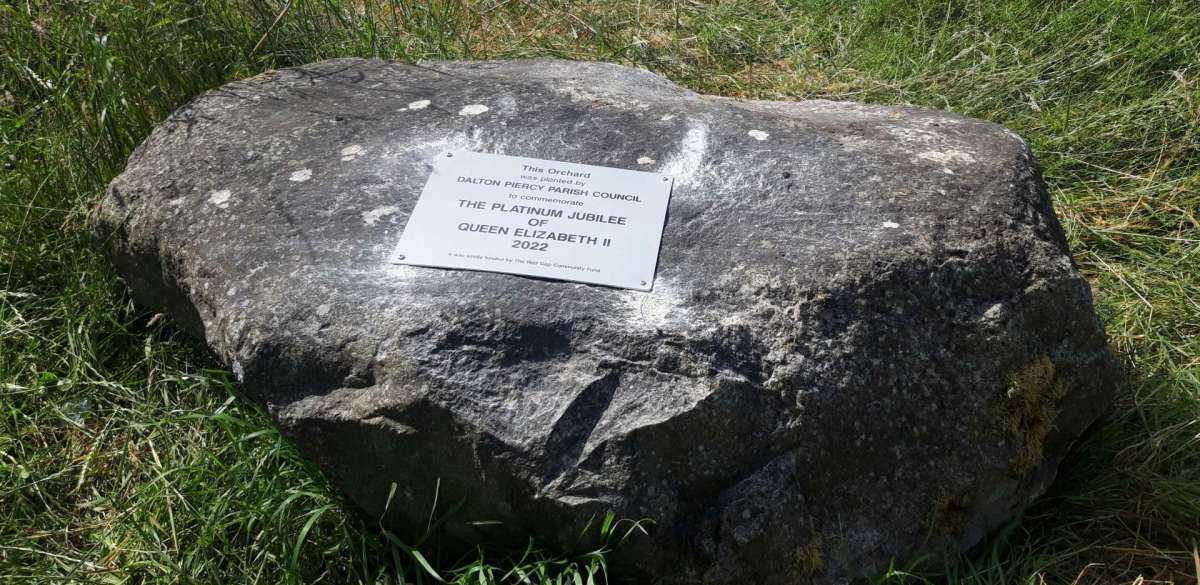The Batts – A brief history
The Batts nature reserve is located to the south-east of Dalton Piercy village and is accessed from a path to the south-east of the bridge over Char Beck off the main road through the village.
The land was historically farmed by the Jobson family and predominantly used as cattle pasture. It’s orientation makes machinery access difficult and hence has been predominantly saved from chemical land treatments, making it very unique. Numerous recollections have been made of the lower field being used for picnics in the post 2nd world war years.
The land was purchased by DPPC for £31,000 in 2005 with a lottery funded contribution, with the requirement the land be kept in public ownership; thus The Batts nature reserve was born and continues to be managed by the Parish Council. A sign was purchased and initial wild flower planting occurred.
The Batts name is much older than the reserve and appears to translate as ‘an area of flat lowland flood plain’. The reserve also contains an area of Special Scientific Interest (SSI) at the west side stream bank, mid-way through the lower downstream field. Occasional collapses of the high stream bank reveal substantial carbon deposits, indicating extensive wildfires may have occurred at the time of the gravel bank formation.
Accessed by a public ‘Right of Way’ that runs from the village towards ‘Brierton’ and Hartlepool (used for vehicle traffic before the current village tarmac road was installed in the early 70’s), this footpath forms part of the ‘Daffodil Walk’. Thousands of daffodil bulbs have been planted at various times along the footpath through The Batts – a spectacular sight in spring time.
In February 2012 the majority of the trees were planted as 2 to 3ft ‘whips’ funded by a £500 grant. The foreground is a mixture of apple, pear, damson plum fruit trees, Hazel and Silver Birch. The mid-ground finds more Birch, extensive Wild Cherries, (loved by our green parakeets!) and Mountain Ash. The distant West edge, local to Char Beck, contains the bigger species, such as Oaks, Willows, Horse Chestnuts, Beech and Yews. Minor planting of Sycamore, Hawthorn, and Blackthorn completes the woodland.
Other key events included gradual planting of snowdrops, and the construction of the three wild flower meadows in 2020.
The Batts reserve now has a variety of animal, insect, bird and plant life. In particular, watch out for kestrels, kingfishers, woodcocks, long tailed tits, pheasants, bat colonies and hunting tawny owls.
Association with Tees Valley Wildlife Trust, and grants from the ‘Red Gap’ Wind Farm Community Fund and HBC have allowed a number of further projects as described below.
Blue bells – 4,500 English blue bells have been planted in the upper wood. The maturity of the trees should provide sufficient shade to allow them to flourish against the previously dominant nettles, docks and grasses. Photos from 2011/12 show the ground covered by a blanket of nettles; now the tree cover provides a world of mosses, fungi and green ant’s nests bulging out of the ground, as if large mole hills have been constructed.
The hedge – After the theft of most of the existing fence adjacent to the footpath in the lower field it was decided to plant a Hawthorn hedge, rather than risk further new fencing losses. Concerns have since arisen as to how this hedge will be managed in future years.
The Wildflower Meadows – Winter 2019 / 2020 saw initial construction of three meadows, seeded with quick growing annuals. The meadows were first cut in the winter of 2020 and reseeded with perennial wildflowers in spring 2021. After the autumn 2021 cut, the meadows had access link paths extended and widened. Tees Valley Wildlife Trust confirm that the meadows are maturing quickly with further seeding in 2023 for the raised ‘bee banks’, still affected by early proliferation of nettles, though grasses are becoming established. The ‘bee banks’ were constructed to encourage mining bees and wasps, which currently occur in the stream bank sides.
The Orchard was planted in 2022 to celebrate the Queen Elizabeth ll Green Canopy (QGC) Platinum Jubilee initiative, and a commemorative stone placed. The middle area of the Batts was allocated for 100 fruit trees, with grants from the Red Gap Community Fund and DPPC. Tees Valley Wildlife Trust and village volunteers planted the first 50 trees with an expectation of first fruit in 2023. Today, residents may either ‘adopt’ an existing tree, or purchase a fruit tree to plant themselves, (or request that a volunteer plant it), and are encouraged to place a tag on each tree to celebrate a key family member (or pet) event, such as birth, marriage, death, or memorial.
The orchard belongs to all Dalton Piercy residents, so help yourself to fruit!
.jpg)
.jpg)
.jpg)


.jpg)